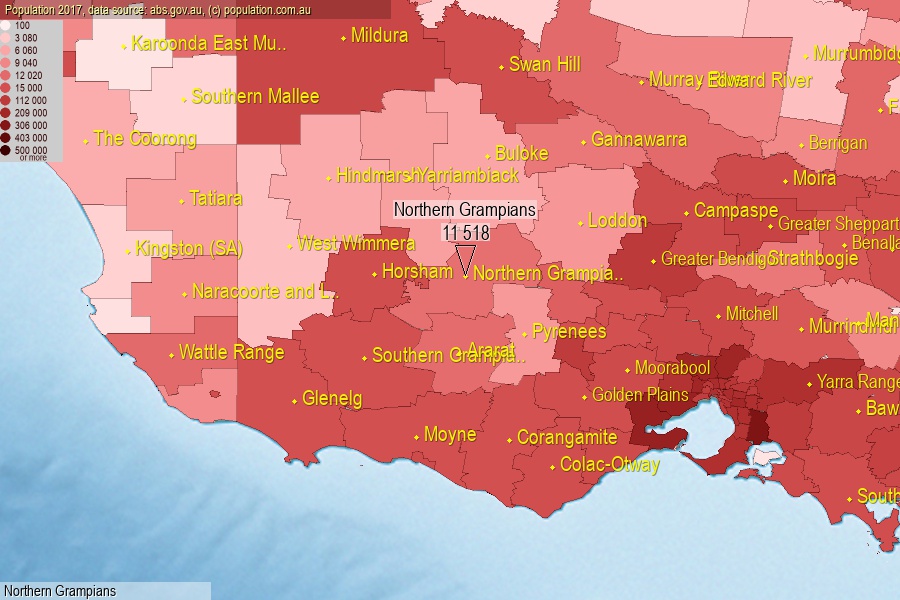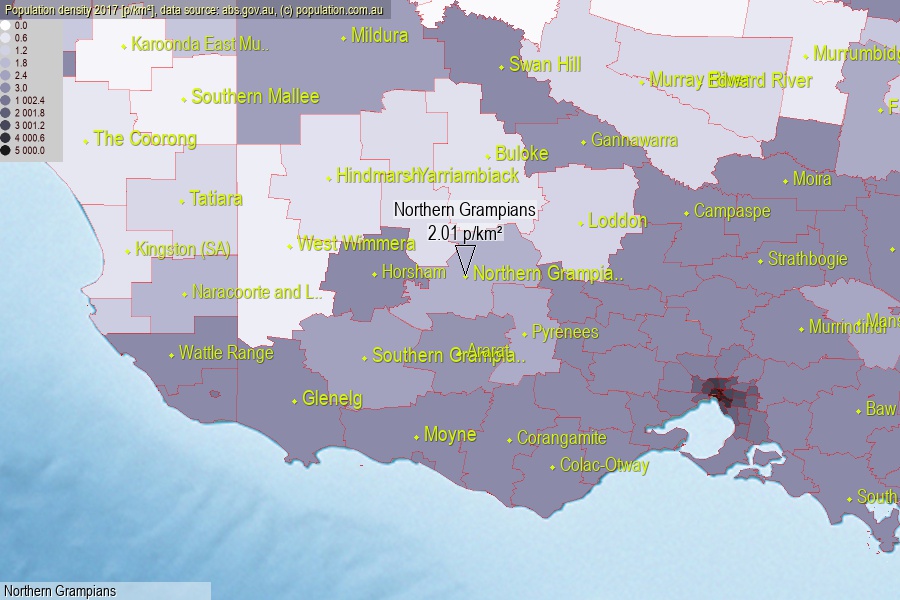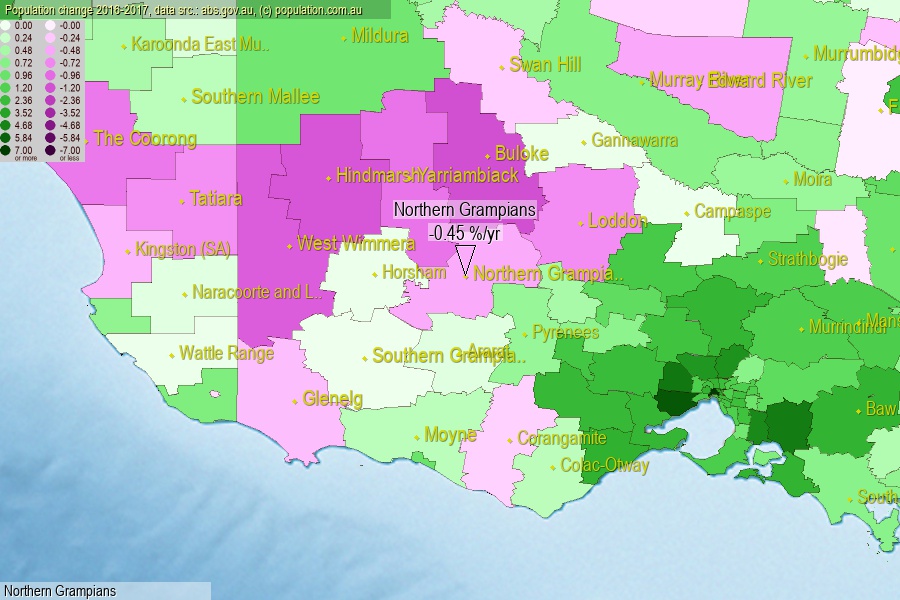 population.com.au
population.com.auLast official estimated population of Northern Grampians Shire (as Local Government Area) was 11 518 people (on 2017-06-30)[2]. This was 0.05% of total Australian population and 0.179% of VIC population. Area of Northern Grampians is 5 729.90 km², in this year population density was 2.01 p/km² . If population growth rate would be same as in period 2016-2017 (-0.45%/yr), Northern Grampians population in 2025 would be 11 110. [0]



Click to enlarge. Northern Grampians is located in the center of the images.
Population [people], population density [p./km²] and population change [%/year] [2]
[1996-2001] -0.66 %/Y
[2001-2002] -0.50 %/Y
[2002-2003] -1.38 %/Y
[2003-2004] -1.24 %/Y
[2004-2005] -1.40 %/Y
[2005-2006] -1.55 %/Y
[2006-2007] 0.00 %/Y
[2007-2008] -0.07 %/Y
[2008-2009] +0.25 %/Y
[2009-2010] -0.03 %/Y
[2010-2011] -0.49 %/Y
[2011-2012] -0.70 %/Y
[2012-2013] -0.75 %/Y
[2013-2014] -0.87 %/Y
[2014-2015] -1.13 %/Y
[2015-2016] -0.64 %/Y
[2016-2017] -0.45 %/Y
[0] Calculated with linear interpolation from officially estimated population
[1] Read more about LGA and Australian Statistical Geography Standard (ASGS) on abs.gov.au
[2] Population data from Australian Bureau of Statistics (Population and density: 2017; change: 2016-2017)
[3] Digital Boundaries: Australian Statistical Geography Standard (ASGS) 2016.